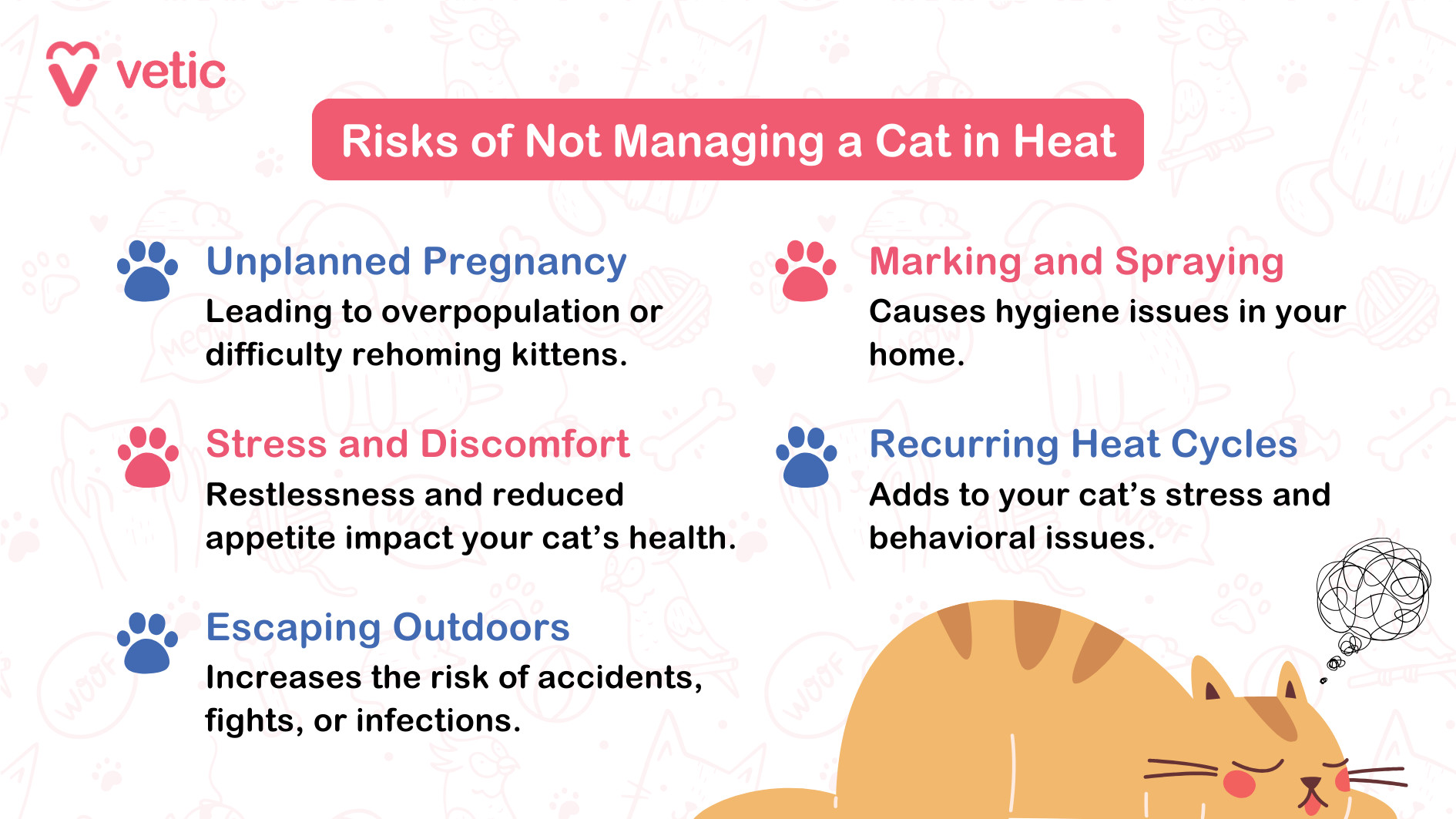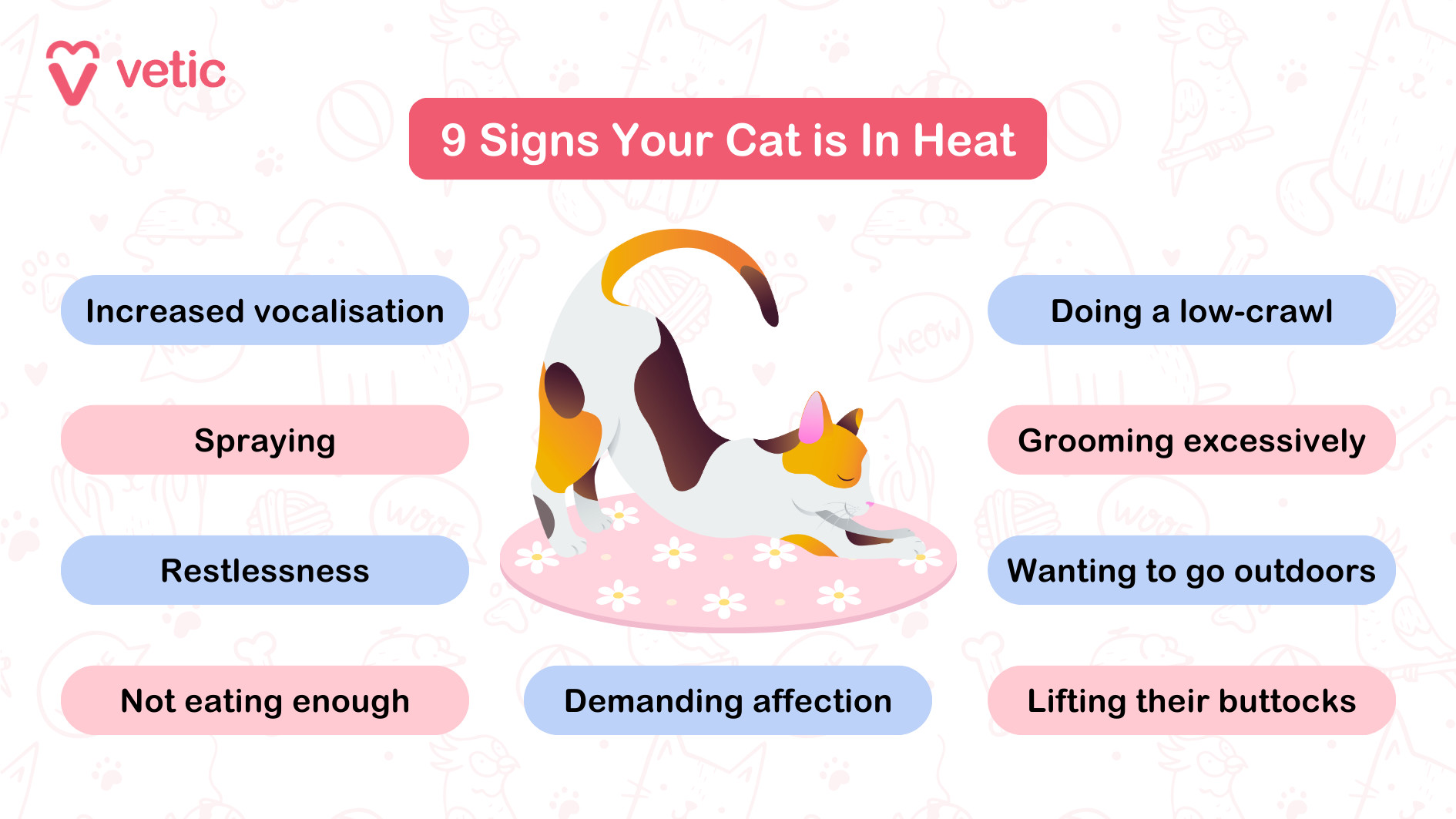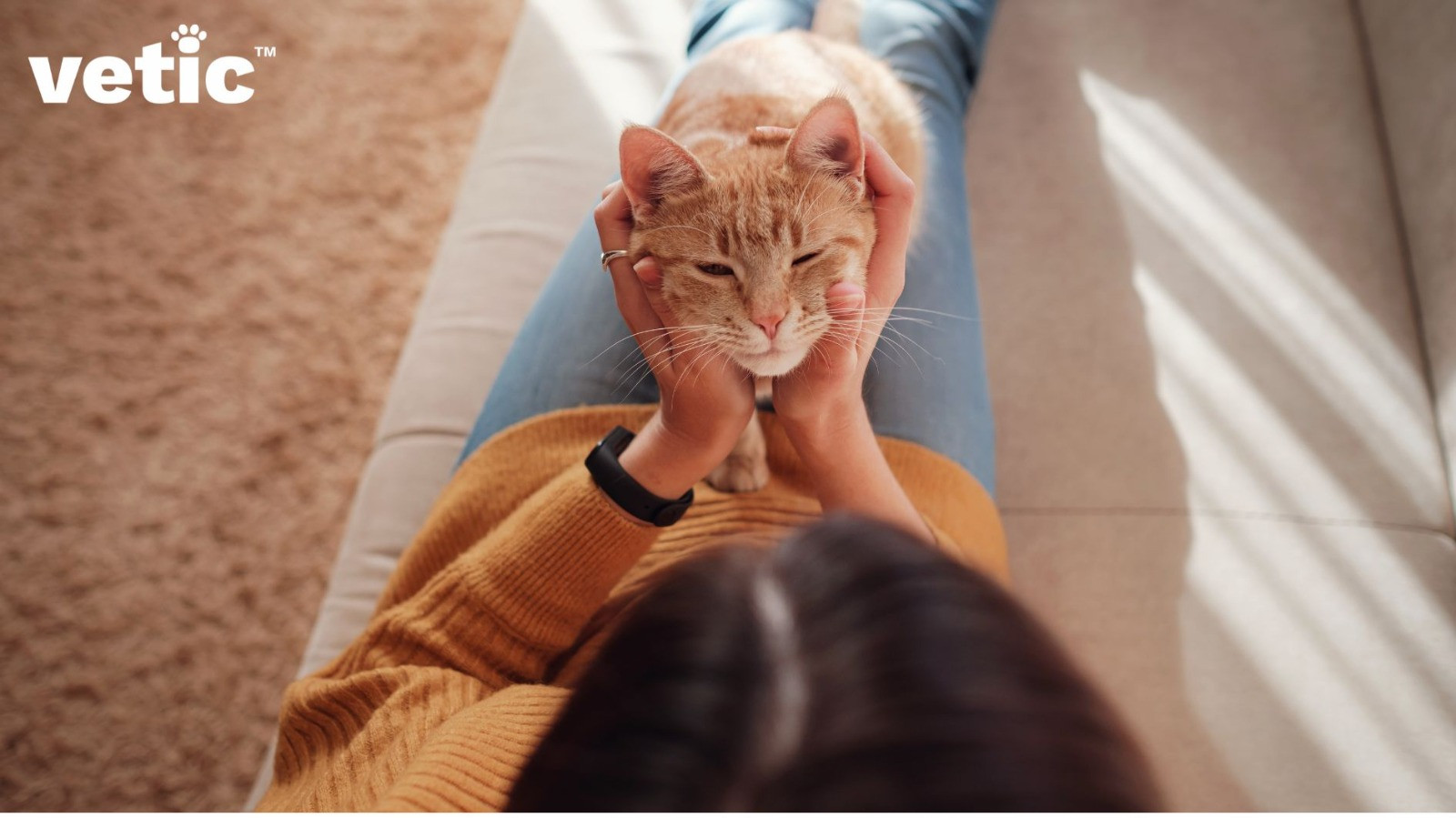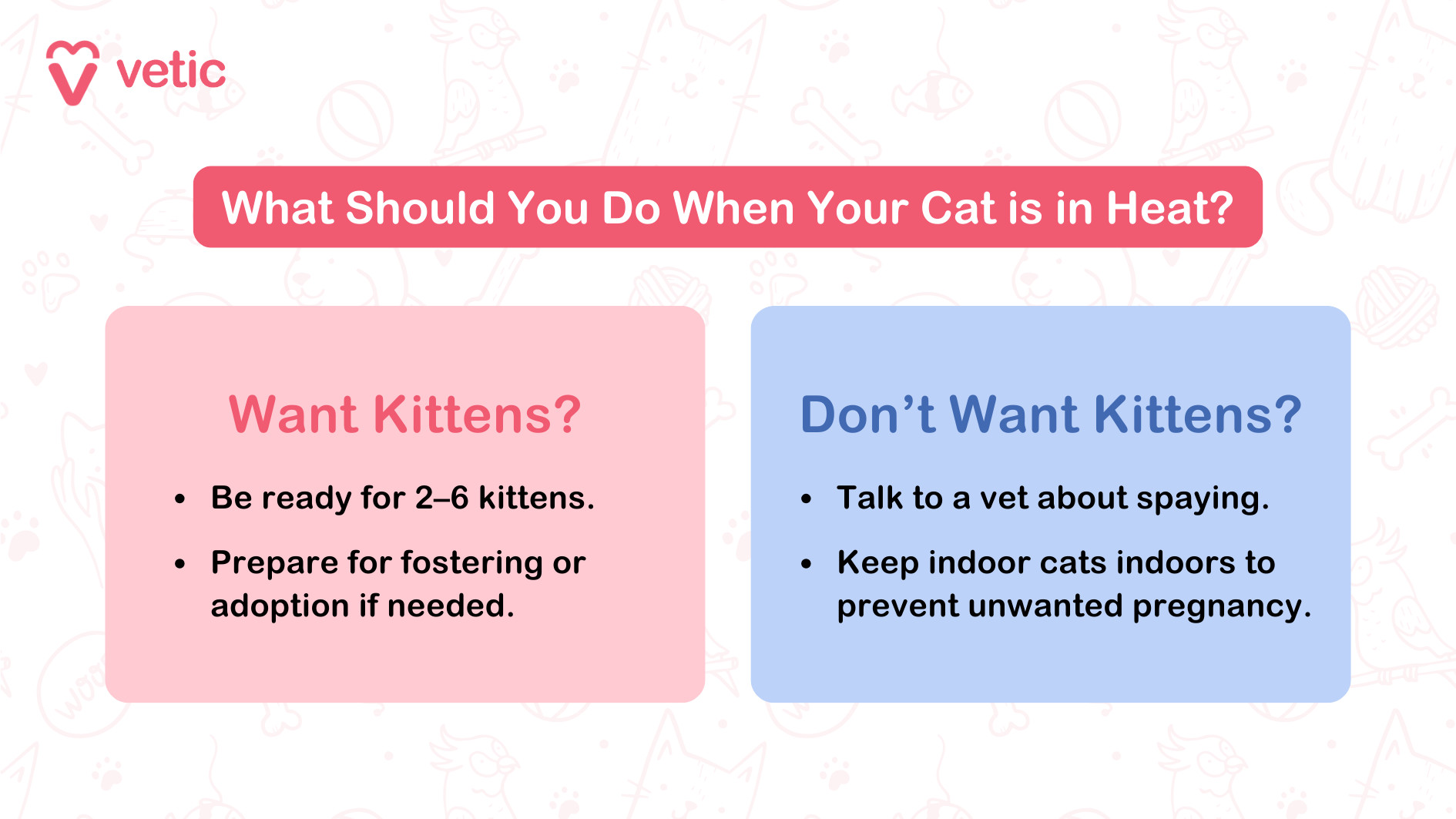Is your feline companion suddenly more vocal than usual, pacing restlessly, or showing an unusual interest in escaping outdoors? These behaviors could indicate that your cat is in heat, a natural part of their reproductive cycle. Understanding the signs of heat in cats is crucial for every cat owner, whether you’re planning for kittens or aiming to prevent unwanted pregnancies.
In this comprehensive guide, we’ll delve into what it means for a cat to be “in heat,” the telltale signs to watch for, and how to best support your feline friend during this period. We’ll also cover essential information about the feline estrous cycle, responsible pet ownership, and when to seek veterinary advice.
Understanding the Feline Heat Cycle (Estrus)
 Curious cat looking through window, representing a cat's desire to go outdoors when in heat
Curious cat looking through window, representing a cat's desire to go outdoors when in heat
The term “in heat,” also known as estrus, refers to the fertile period in a female cat’s reproductive cycle when she is receptive to mating. Unlike humans who have menstrual cycles, cats experience estrous cycles. This cycle is driven by hormonal changes that prepare her body for potential pregnancy.
What Does “In Heat” Mean?
Simply put, when a cat is “in heat,” her body is signaling that she is ready to mate and can become pregnant. This period is a natural biological process influenced by hormones and environmental factors.
Sexual Maturity: When Do Cats Start Going Into Heat?
Female kittens can reach sexual maturity and experience their first heat cycle as early as four months old, although it’s more common between 4 to 12 months of age. The exact timing varies depending on several factors:
- Breed: Some breeds may mature earlier or later than others.
- Overall health: Healthy cats are more likely to cycle regularly.
- Environment and season: Cats are seasonally polyestrous, meaning their heat cycles are influenced by daylight hours.
It’s important to be aware that kittens can get pregnant surprisingly young. A kitten who goes into heat at 4 months old could potentially become a mother by just 6 months old.
How Long Does a Cat’s Heat Cycle Last?
The duration of a heat cycle can vary, but typically, a cat will remain in heat for approximately one week, with ranges from a few days up to ten days.
How Often Do Cats Go Into Heat?
Cats are polyestrous, meaning they can go into heat multiple times within a breeding season. After a heat cycle ends, another one can begin as soon as 2 to 3 weeks later. This frequent cycling can continue throughout the breeding season if the cat does not become pregnant.
If you observe your cat going into heat repeatedly, it’s advisable to consult with your veterinarian to discuss spaying and other options for your cat’s well-being.
Do Cats Have Periods Like Humans?
 Concerned cat owner observing their cat, thinking about the risks of not managing a cat in heat
Concerned cat owner observing their cat, thinking about the risks of not managing a cat in heat
While cats have reproductive cycles, they do not experience menstruation in the same way humans do. During a cat’s estrus cycle, the uterine lining is reabsorbed by the body, preparing the uterus for potential embryo implantation. Unlike human menstruation, there is typically no significant bleeding.
However, some cat owners might notice very light spotting during their cat’s heat. If you observe excessive bleeding, swelling, pain, or loud vocalization, it’s crucial to seek immediate veterinary attention, as these could be signs of a more serious issue, such as pyometra, a life-threatening uterine infection. Pyometra is a medical emergency and is more common in unspayed female cats, even young ones.
9 Key Signs Your Cat Is In Heat
Knowing the signs of heat in cats will help you understand your cat’s behavior and provide appropriate care. Here are nine common signs to watch for:
 Infographic summarizing 9 signs of a cat in heat, including vocalization, spraying, restlessness, and more
Infographic summarizing 9 signs of a cat in heat, including vocalization, spraying, restlessness, and more
1. Increased Vocalization (Yowling or Meowing)
One of the most noticeable signs is a significant increase in vocalization. Cats in heat, both female and male (though males are reacting to nearby females), may become extremely vocal, meowing loudly, yowling, or even “crying”. This is a mating call, intended to attract the attention of potential partners. The sounds can be persistent and may seem distressed, even if your cat is not in pain.
If your cat is generally communicative, you’ll need to pay attention to other signs in conjunction with increased vocalization to confirm if she’s in heat.
2. Spraying
While spraying is more commonly associated with male cats marking their territory, female cats in heat may also spray. This urine spraying serves a dual purpose: marking territory and leaving scent signals for potential mates. Spraying during heat can occur even if your cat is consistently using her litter box otherwise.
3. Restlessness and Pacing
Cats in heat often become restless and agitated. You might notice your cat pacing more frequently, sleeping less, and seeming unable to settle down. They may become fixated on windows and doors, particularly if they sense other cats outside. This restlessness is driven by hormonal urges and the desire to find a mate.
4. Changes in Appetite
Appetite changes are common when cats are in heat. Your cat may eat less than usual, and in some cases, they might even vomit after eating due to stress or hormonal fluctuations. While a decreased appetite for a short period might be normal during heat, it’s crucial to ensure your cat stays hydrated. If your cat refuses food or water for more than 24 hours, consult your veterinarian.
5. Increased Affection Demands
 A woman petting a ginger cat, illustrating increased affection seeking in cats in heat
A woman petting a ginger cat, illustrating increased affection seeking in cats in heat
Many cats, especially females, become noticeably more affectionate when in heat. They may rub against your legs, furniture, and ankles more frequently. They might also wrap their tail around your legs and solicit petting and attention more insistently than usual. Even typically independent cats may suddenly seek out laps and cuddles.
6. Low Crawling Behavior
“Low crawling” is a distinctive behavior seen in cats in heat. Your cat might crouch low to the ground and crawl around, often near corners of rooms or furniture. They may moan or yowl while doing this, and you might observe them rubbing their cheeks and head against surfaces. This behavior helps them distribute their scent around the house to attract potential mates. While it can appear as if your cat is in pain, it’s a normal behavior associated with estrus.
7. Excessive Grooming
Cats in heat often engage in excessive grooming. Female cats may particularly focus on grooming their genital area and belly. During estrus, a female cat’s vulva may become slightly swollen, and grooming can provide some comfort or stimulation to this sensitive area.
8. Desire to Go Outdoors
 Curious cat looking through window, representing a cat's desire to go outdoors when in heat
Curious cat looking through window, representing a cat's desire to go outdoors when in heat
Even strictly indoor cats may become desperate to go outside when in heat. Their instinct to find a mate becomes very strong, and they will seek out any opportunity to escape. This is a significant risk for indoor cats, as venturing outdoors exposes them to dangers like traffic, predators, diseases, and fights with other animals. If you have an indoor cat and do not want her to get pregnant, it’s crucial to be extra vigilant about preventing escapes during her heat cycle.
9. Buttocks Lifting and Tail Posturing
This is a very clear sign, especially in female cats. A cat in heat will often assume a mating posture when you pet her, particularly along her back. She will lower her front body, raise her hindquarters (buttocks), and may tread with her back paws. She might also move her tail to the side, exposing her vulva. This posture, known as “presenting,” is an unmistakable signal that she is receptive to mating.
What Should You Do When Your Cat Is In Heat?
 Decision points for cat owners when their cat is in heat: breeding or preventing pregnancy
Decision points for cat owners when their cat is in heat: breeding or preventing pregnancy
Your actions when your cat is in heat depend entirely on your intentions.
If You Want Kittens:
- Be prepared for a litter of 2 to 6 kittens.
- Ensure you have a plan for caring for the kittens and finding them good homes, whether through fostering or adoption.
- Research responsible breeding practices and consider your cat’s health and lineage.
If You Do Not Want Kittens:
- Spaying is highly recommended to prevent unwanted pregnancies and eliminate heat cycles altogether. Talk to your veterinarian about the best time to spay your cat.
- Keep indoor cats strictly indoors during their heat cycle to prevent accidental mating and pregnancy. Ensure all doors and windows are secure.
- If you are not planning to spay immediately, consider temporary separation from any intact male cats in the household to prevent mating.
If you notice any unusual discharge, bleeding, or signs of illness, consult your veterinarian immediately.
How to Comfort a Cat in Heat: Calming Tips
While you cannot stop the heat cycle without spaying, you can make your cat more comfortable during this time. Here are some tips to help calm a cat in heat:
- Create a Calm and Quiet Space: Provide a peaceful retreat for your cat, away from loud noises and excessive activity. Offer a comfortable bed or blanket in a quiet corner.
- Minimize Environmental Stimulation: Dim the lights, close curtains to reduce outside stimuli, and try to maintain a calm household environment.
- Offer Safe Hiding Spots: Cats often feel more secure in enclosed spaces. Provide cardboard boxes, covered beds, or cat caves where she can retreat and feel safe.
- Provide Vertical Space: Cat trees, shelves, and window perches can offer a sense of security and allow your cat to observe her surroundings from a safe vantage point.
- Scratching Post Availability: A sturdy scratching post allows your cat to release pent-up energy and stress in a healthy way, as scratching is a natural stress-relieving behavior for cats.
- Use Feline Pheromone Sprays or Diffusers: Synthetic feline pheromones mimic natural calming signals and can help reduce anxiety and create a more relaxed environment.
- Limit Excessive Physical Contact: While your cat may be more affectionate, be mindful of her boundaries. Avoid prolonged petting or handling if she seems overstimulated. Refrain from scratching or petting the lower back or belly area, as this can trigger mating posture and potentially lead to unwanted biting or scratching if she becomes overwhelmed.
- Offer a Heated Pad or Cozy Bed: Gentle warmth can soothe muscle tension and discomfort. A heated pad or a self-warming cat bed can be very comforting.
- Distraction with Interactive Play: Engage your cat with interactive toys like wand toys, puzzle feeders, or laser pointers. Playtime can help redirect her energy and provide mental stimulation, which can be a welcome distraction from her hormonal urges.
- Soothing Music: Soft classical music or nature sounds can create a calming atmosphere. Some cats respond well to music designed specifically for feline relaxation.
- Ensure Fresh Food and Water: Maintain a consistent routine of providing fresh water and a balanced diet. Even if her appetite is reduced, ensure food is always available.
- Keep the Litter Box Impeccably Clean: A clean litter box is always important, but especially when your cat is already experiencing stress. Scoop the litter box daily and perform regular full litter changes.
- Consistent Playtime Schedule: Regular play sessions, even short ones, can help release energy, reduce anxiety, and strengthen your bond with your cat.
During her heat cycle, your cat may exhibit behaviors that seem unusual or even distressing. Patience, understanding, and providing a comfortable and calming environment are key. Mental stimulation, attention (on her terms), and extra treats can also help. If you have any concerns or are unsure how to best support your cat, always consult with your veterinarian for personalized advice. If you are not planning to breed your cat, spaying is the most responsible and effective way to eliminate heat cycles and prevent unwanted pregnancies, contributing to her long-term health and well-being.
